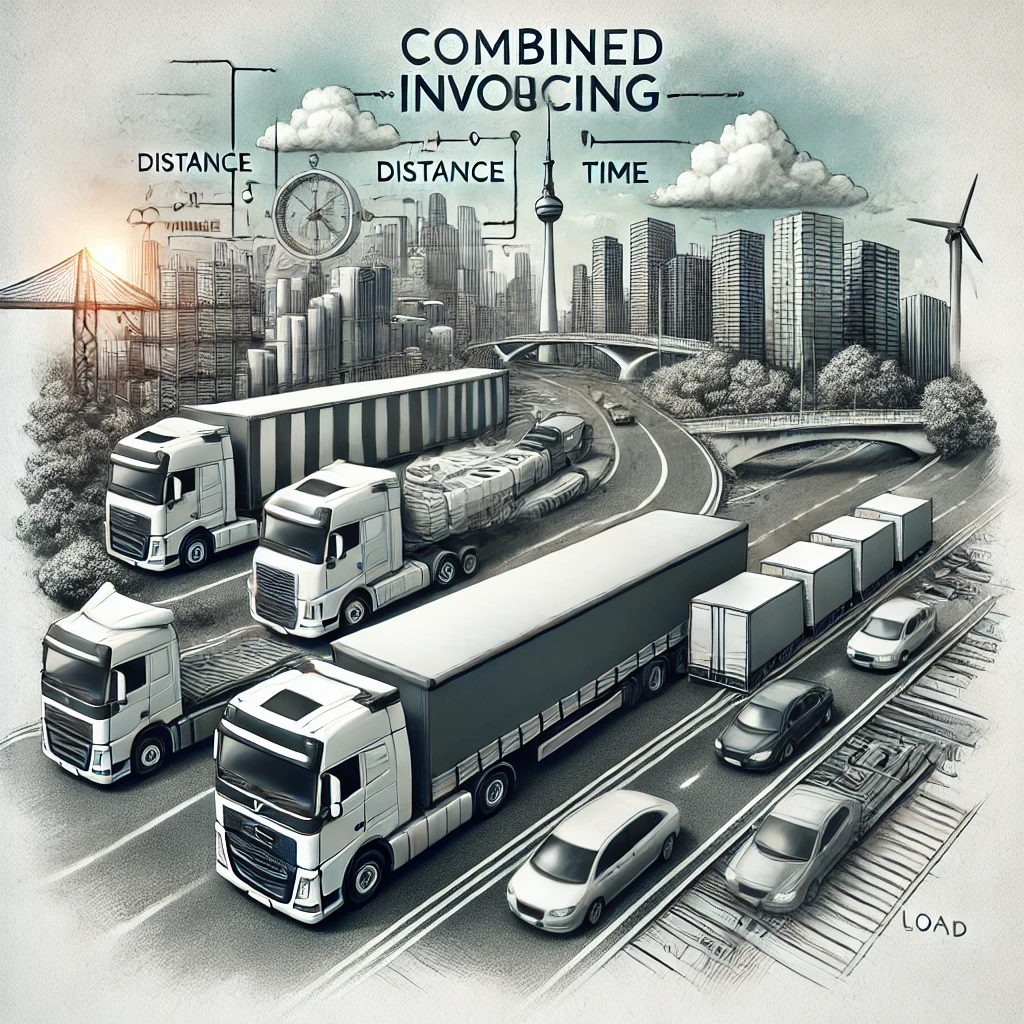The Ultimate Guide to Trucking Invoices
This guide will explore key aspects of trucking invoices and how tools like Linbis can streamline your processes and boost your business performance.

1. Introduction
In the dynamic world of trucking and logistics, efficient and accurate invoicing is crucial for success. Whether you’re an owner-operator or managing a fleet, understanding trucking invoices is essential for maintaining healthy cash flow and business growth.
Trucking invoices are more than just bills – they’re detailed service records, financial planning tools, and primary communication points with clients regarding payment. Modern technology, like Linbis software, has revolutionized invoicing in the trucking industry. Linbis not only creates invoices but also manages bills, tracks expenses and income for each trip, helping companies and owner-operators understand their per-trip profitability.
This guide will explore key aspects of trucking invoices and how tools like Linbis can streamline your processes and boost your business performance.
2. Key Components of a Trucking Invoice
A well-structured trucking invoice ensures clear communication and prompt payment. Here are the essential components:
2.1 Shipper and Carrier Information
- Your company details (name, logo, address, contact information)
- Client information
- Invoice number and date
2.2 Shipment Details
- Origin and destination
- Bill of Lading number
- Description of goods
- Weight and quantity
2.3 Rates and Charges
- Base rate (per mile, per load, or hourly)
- Additional charges (fuel surcharges, detention fees, etc.)
- Subtotal and total amount due
2.4 Payment Terms
- Due date
- Accepted payment methods
- Late payment policies
Linbis automates the invoicing process, ensuring all these components are included accurately and consistently. Moreover, it tracks all trip expenses, including fuel costs, maintenance, and driver wages, providing a comprehensive financial picture.
For example, for a long-haul delivery from Los Angeles to New York, Linbis would track:
- Total distance traveled
- Fuel expenses
- Tolls or parking fees
- Driver’s wages
- Loading/unloading fees
- Allocated maintenance costs
This detailed tracking helps you understand your profit margin for each specific journey, crucial in an industry where margins can be slim.

3. Types of Trucking Invoices
Different operational models require various types of invoices. Let’s explore the most common types and how Linbis adapts to each:
3.1 Per Mile Invoices
- Charges based on miles driven
- Pros: Simple, transparent for long-distance hauls
- Cons: May not account for time in traffic or loading/unloading
- Linbis Application: Automatically calculates mileage using GPS data
3.2 Per Load Invoices
- Flat rate for each shipment
- Pros: Simplifies pricing, potentially more profitable for efficient operations
- Cons: May not suit varying distances or complexities
- Linbis Application: Sets up pre-defined rates for common routes or load types
3.3 Hourly Rate Invoices
- Charges based on time spent on the shipment
- Pros: Accounts for all time, suitable for unpredictable deliveries
- Cons: Less predictable for clients, requires accurate time tracking
- Linbis Application: Integrates with ELDs for precise time tracking
3.4 Combination Invoices
- Uses a mix of the above methods
- Pros: Can more accurately reflect true service cost
- Cons: More complex to calculate
- Linbis Application: Allows for custom rate calculations combining multiple factors
3.5 Percentage of Load Invoices
- Carrier receives a percentage of total load value
- Pros: Aligns compensation with load value
- Cons: May not reflect actual transport cost
- Linbis Application: Can calculate invoice amount based on load value and specified percentage
Choosing the right invoice type depends on your operations, client preferences, load characteristics, operational costs, and industry standards. Linbis’s flexibility allows you to switch between different invoicing methods as your business evolves or for different clients.
4. Creating a Trucking Invoice
Creating accurate and professional invoices is crucial for timely payments and maintaining good client relationships. Here’s a step-by-step guide:
- Gather all necessary information (shipment details, rates, additional charges)
- Choose the appropriate invoice template or format
- Fill in all required fields accurately
- Double-check all calculations
- Add any relevant notes or special instructions
- Review the invoice for completeness and accuracy
- Send the invoice to the client promptly
Linbis simplifies this process by:
- Automatically pulling shipment details from your records
- Calculating charges based on pre-set rates and tracked expenses
- Generating professional, branded invoices with all necessary information
- Allowing for easy customization and addition of notes
- Providing options for digital sending and tracking of invoices

5. Best Practices for Trucking Invoices
To optimize your invoicing process:
- Be consistent with your invoicing schedule
- Use clear, professional language
- Itemize all charges for transparency
- Include all relevant supporting documentation
- Offer multiple payment options
- Follow up on overdue invoices promptly
- Keep detailed records of all invoices and payments
Linbis supports these best practices by:
- Automating regular invoice generation
- Providing clear, customizable invoice templates
- Automatically itemizing charges based on tracked expenses
- Storing all invoice and payment records securely
- Generating reports to help identify payment trends and issues
6. Troubleshooting Common Invoice Issues
Even with the best systems, invoice issues can arise. Here’s how to handle common problems:
- Late Payments: Send polite reminders, consider offering payment plans
- Disputed Charges: Provide detailed breakdowns, be open to discussion
- Lost Invoices: Keep backups, resend promptly when requested
- Calculation Errors: Double-check all math, correct and explain any mistakes immediately
Linbis helps prevent many of these issues through its accurate tracking and calculation features. It also provides easy access to historical data, making dispute resolution simpler.
Conclusion
Mastering trucking invoices is essential for the financial health and growth of your trucking business. By understanding the key components, choosing the right invoice types, and following best practices, you can ensure a smooth cash flow and strong client relationships.
Leveraging technology like Linbis can significantly streamline your invoicing process, reduce errors, and provide valuable insights into your business operations. By automating invoice creation, expense tracking, and financial analysis, Linbis allows you to focus on what you do best – running your trucking business efficiently and profitably.
Remember, an effective invoicing system is not just about getting paid – it’s about building a professional, transparent, and trustworthy business operation that sets you apart in the competitive trucking industry.
